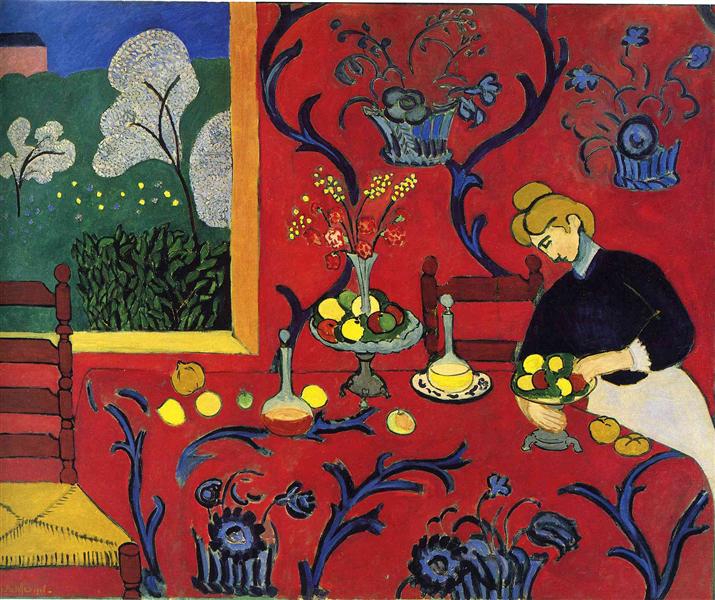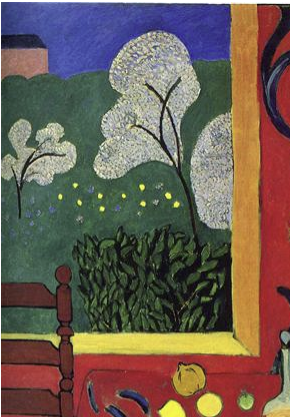Henri Matisse, Harmony in Red (The Red Room)
Henri Matisse (1869-1954) started law school at age 21, but when an illness interrupted his studies, he began to paint. Soon thereafter, he decided to devote himself totally to art. His loose brushwork is reminiscent of Impressionism, and his palette is inspired by the color theories of the Post-Impressionists.


In Harmony in Red (The Red Room), the lush red of the wallpaper and tablecloth absorb the viewer in their brilliance. The arabesques of the vines create an enticing surface pattern. He crowds the table and wall with the same patterns. They seem to run together without distinction. This jumbling of patterns propels the background of the picture plane, asserting the flatness of the canvas. The two-dimensionality of the canvas is further underscored by the window in the upper left, which is rendered so flatly that it suggests a painting of a garden scene instead of an actual view of a distant landscape.
Yet for all of these attempts to collapse space, Matisse counteracts the effect with a variety of perspective cues: the seat of the ladder-back chair recedes into space, as does the table; and the dishes are somewhat foreshortened, combining frontal and bird’s-eye views. Matisse used line expressively, moving it rhythmically across the canvas to complement the pulsing color. Although the structure of Harmony in Red remains assertive, Matisse’s foremost concern was to create a pleasing pattern. Matisse insisted that painting ought to be joyous. His choice of palette, his lyrical use of line, and his brightly painted shapes are all means toward that end. He even said of his work that it ought to be devoid of depressing subject matter, that his art ought to be “a mental soother, something like a good armchair in which to rest.”[1]
- Lawrence S. Cunningham, John J. Reich, and Lois Fichner-Rathus, Culture and Values: A Survey of the Humanities, vol. 2, 8th ed., (Boston: Cengage Learning, 2014), 684-685. ↵

